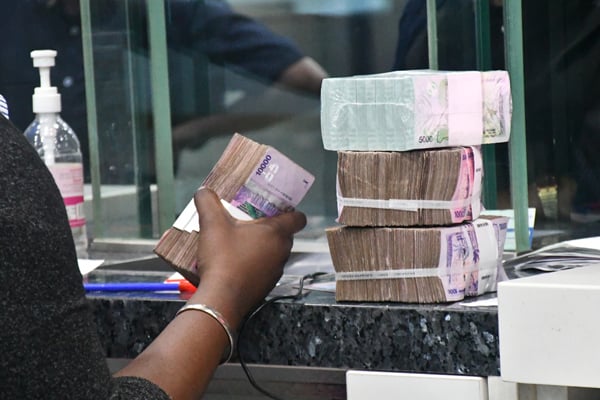Fall in oil prices lifts up shilling

The shilling has faced a volatile stance since April, losing by 8 percent against the dollar. Photo / Edgar R Batte
What you need to know:
- The shilling gained by 0.2 percent in the two months to October after months of sustained depreciation
The shilling appreciated slightly against the dollar during August and October after experiencing more than six months of volatility, according to Bank of Uganda.
The local unit, which had gained some stability at the end of July, gained by 0.2 percent in the two months to October supported by a decline in global commodity prices and tightening of the monetary policy by Bank of Uganda.
However, Dr Adam Mugume, the Bank of Uganda director for research, told Monitor at the weekend that movement in the position of the shilling - appreciation or depreciation - will largely depend on how the global economy behaves and how government handles the rising cost of external debt repayment.
The shilling has been under pressure partly because of a spike in the import bill due to a substantial increase in oil imports and high cost of debt servicing.
Bank of Uganda recently expressed concern, noting that the high cost of debt repayment was impacting dollar reserves, amid low inflows.
The rising demand for dollars by oil importers has also put a lot of pressure on the shilling.
In August, Bank of Uganda indicated that dollar demand for oil-related imports had risen by 58 percent.
“The high cost of external borrowing and weakening global growth will continue to determine the movement of the shilling,” Dr Mugume said, noting that in the near term, headwinds from extended global geopolitical tensions, tightening of global financial conditions, subdued external demand and heightened foreign investor risk aversion, will also determine how the shilling behaves,
The shilling had, between April and June, experienced a lot of pressure, losing against the dollar by 8 percent.
However, Dr Mugume said policy tightening and other measures, which further tightened liquidity in the money market, had helped the unit to stabilise with a bias toward appreciation.
The appreciation has further been supported by the recent decline in global commodity prices such as crude oil.
Dr Mugume also indicated that Bank of Uganda has since April intervened in the money markets by selling $260m in the foreign interbank exchange rate market as an attempt to contain the excessive volatility.
Uganda has also in the recent past suffered a huge portfolio capital outflow with investors withdrawing about $412.6m between March and September to invest in high yield markets.
Shilling trading
Ms Catherine Kijjagulwe, the Absa head of trading, at the weekend told Daily Monitor that the shilling had continued to trade within a narrow range, opening last Monday at Shs3,780 and trading marginally stronger at Shs3,770 on Friday.
The movement, she said, could have been supported by inflows from non-governmental organisations, exporters and other sectors, with limited pockets of corporate demand.
Ms Kijjagulwe also indicated that the local unit is expected to maintain trading within a range of Shs3,750 and Shs3,830 against the dollar as the “market awaits to see if inflows will remain healthy as we draw close to the year-end festivities and if the Shs3,750 psychological level will be breached”.




